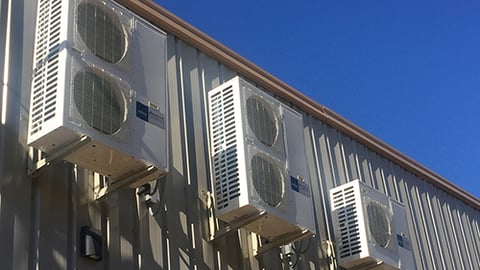Reducing Costly Supermarket Electricity Use
The numbers are daunting, maybe even so daunting that supermarket operators could be tempted to throw up their hands and wonder, “Is it worth it?”
The numbers in question are the amount of electricity, and its associated cost, needed to keep a supermarket operating. In particular, a report produced by the U.S. Environmental Protection Agency’s Energy Star program says that “merchandising trends are pushing grocery stores to become even more energy-intensive as stores are carrying more fresh food products, frozen food aisles are expanding, food safety temperature requirements are tightening and demand for prepared foods is growing.”
These observations are buttressed by a 2015 Energy Star “Data Trends” report indicating that, depending on the size of the supermarket, annual energy use intensity ranges from 100 to 1,500 thousand BTUs per square foot (kBTU/ft2), or 100,000 to 1.5 million BTUs. To further delineate the electrical load that supermarkets annually require, one kilowatt-hour (kWh), the measurement at which users are charged for electricity consumption, equals 3,412 BTUs.
Within that total annual electricity consumption, according to the U.S. Energy Information Administration, 56 percent of a supermarket’s electrical load goes toward refrigeration. The second-most energy-intensive operation in the supermarket is lighting, which accounts for only 23 percent of total usage. The “Data Trends” report also noted that the median size of the nation’s 15,000-plus supermarkets is 50,000 square feet, including an average of 10 walk-in cooler or freezer units.
Taken all together, EnergyRight Solutions, a program of the Tennessee Valley Authority that aims to help companies optimize their energy consumption, estimates that an average-sized supermarket in the United States will spend nearly $230,000 a year on energy.
Daunting, right?
To The Rescue
So, what’s a supermarket operator to do? Fortunately, Energy Star offers a solution: Explore more energy-efficient practices and technologies for refrigerated display cases, walk-in coolers and freezers.
And the manufacturers of those walk-in coolers and freezers have responded. Specifically, a new type of frame/rail system for walk-in cooler or freezer units has recently been introduced to the market, one that has been designed to help mitigate the constant assault on walk-in cooler or freezer units by exterior heat and humidity. This assault forces walk-in units to work harder to maintain their preset temperature levels. Additionally, condensation-related ice formation can put strain on cooling-system system components, leading to premature failure that can necessitate costly repairs or replacement.
With that in mind, the revolutionary design of the new frame/rail system allows it to replace traditional wood structural framing while delivering optimal thermal-envelope performance, lower energy usage and utility costs, a reduced carbon footprint, and greater scalability for use with any size, configuration or combination of walk-in cold-cooler or freezer-unit wall, ceiling and floor panels.
The true innovation in this new frame/rail system is that it combines the proven structural performance of wood framing with the thermal performance of polyurethane foam. The method of construction injects a polyurethane foam insulation jacket around a structural member. The polyurethane is injected with a blowing agent that can form a rigid plastic, but only 3 percent of the material in the foam insulation is solid. The other 97 percent consists of millions of minuscule air bubbles that have the blowing-gas agent inside them. These air bubbles are better able to resist the flow of heat through them when compared to wood.
Improved R-Value = Reduced Energy Use
The result is a framing system that increases walk-in unit R-values to a level that slows the rate of heat flow and condensation formation, while having comparable strength to traditional wood-framed panels, which limits issues concerning life-cycle performance. Specifically, the new framing system produces an R-value of R5.9-per-inch of thickness versus the typical R-value of wood, which is R1.2-per-inch of thickness. This makes the new frame system around five times more heat-flow resistant than wood.
From an electricity-consumption perspective, third-party-verified tests have shown that a 5-inch thick frame/rail system with the new wood/polyurethane construction will allow a walk-in freezer unit to deliver an average savings of 9.05 kWh per day of operation for every 1,000 square feet of panel surface when compared with a 5-inch thick wood frame/rail. That daily savings equates to 3,303 kWh of energy savings per year for every 1,000 square feet of panel surface. According to the website electricchoice.com, the average cost of a kWh of electricity in the United States, as of March 2019, was 13.19 cents. At that cost and the rate of kWh savings of 9.05 per day, the daily savings is $1.19. Therefore, the annual kWh savings will be $435.35 for every 1,000 square feet of panel surface.
While the assault on walk-in cooler or freezer units by exterior heat and humidity will never cease, supermarket operators now have a new ally in the battle to rein in electricity usage and cost. The new frame/rail system is a true game-changer in walk-in cold-cooler or freezer design and operation, since it truly offers the best of both worlds: the structural benefits of wood combined with the insulative properties of foam. The benefits inherent in the design, construction and operation of the new frame/rail system mean that supermarket operators who rely heavily on walk-in coolers and freezers as part of their facilities can meet the strict regulations regarding food cooler or freezer food preservation while doing so at a reduced operational cost.












